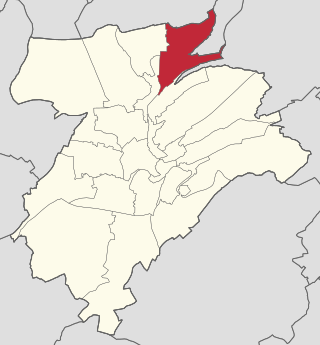Related Research Articles

The Bessemer process was the first inexpensive industrial process for the mass production of steel from molten pig iron before the development of the open hearth furnace. The key principle is removal of impurities from the iron by oxidation with air being blown through the molten iron. The oxidation also raises the temperature of the iron mass and keeps it molten.

Sir Henry Bessemer was an English inventor, whose steel-making process would become the most important technique for making steel in the nineteenth century for almost one hundred years. He also played a significant role in establishing the town of Sheffield, nicknamed ‘Steel City’, as a major industrial centre.

Henry Louis Le Chatelier was a French chemist of the late 19th and early 20th centuries. He devised Le Chatelier's principle, used by chemists and chemical engineers to predict the effect a changing condition has on a system in chemical equilibrium.

Frederick Brian Pickering, AMet, DMet, FIMMM, CEng, FREng was an English metallurgist. His research and development activities contributed significantly to the creation of stronger and lighter steels.

Siderite is a mineral composed of iron(II) carbonate (FeCO3). Its name comes from the Ancient Greek word σίδηρος (sídēros), meaning "iron". A valuable iron ore, it consists of 48% iron and lacks sulfur and phosphorus. Zinc, magnesium, and manganese commonly substitute for the iron, resulting in the siderite-smithsonite, siderite-magnesite, and siderite-rhodochrosite solid solution series.
Alexander Parkes was a metallurgist and inventor from Birmingham, England. He created Parkesine, the first man-made plastic.

Sir Isaac Lowthian Bell, 1st Baronet, FRS was a Victorian ironmaster and Liberal Party politician from Washington, County Durham, in the north of England. He was described as being "as famous in his day as Isambard Kingdom Brunel".

Sidney Gilchrist Thomas was an English inventor, best known for his role in the iron and steel industry.
Percy Carlyle Gilchrist FRS was a British chemist and metallurgist.
The Company of Mineral and Battery Works was, with the Society of the Mines Royal, one of two mining monopolies created by Elizabeth I. The company's rights were based on a patent granted to William Humfrey on 17 September 1565. This was replaced on 28 May 1568 by a patent of incorporation, making it an early joint stock company. The Society of the Mines Royal was incorporated on the same day.

Dommeldange is a quarter in north-eastern Luxembourg City, in southern Luxembourg.

Sir George Thomas Beilby was a British chemist.

Blaenavon Ironworks is a former industrial site which is now a museum in Blaenavon, Wales. The ironworks was of crucial importance in the development of the ability to use cheap, low quality, high sulphur iron ores worldwide. It was the site of the experiments by Sidney Gilchrist Thomas and his cousin Percy Gilchrist that led to "the basic steel process" or "Gilchrist–Thomas process".

The Gilchrist–Thomas process or Thomas process is a historical process for refining pig iron, derived from the Bessemer converter. It is named after its inventors who patented it in 1877: Percy Carlyle Gilchrist and his cousin Sidney Gilchrist Thomas. By allowing the exploitation of phosphorous iron ore, the most abundant, this process allowed the rapid expansion of the steel industry outside the United Kingdom and the United States.

Edward Windsor Richards, known as Windsor Richards, was a Welsh engineer, and steel maker.
Edward Pritchard Martin was a British engineer, and steel maker.

Bolckow, Vaughan & Co., Ltd was an English ironmaking and mining company founded in 1864, based on the partnership since 1840 of its two founders, Henry Bolckow and John Vaughan. The firm drove the dramatic growth of Middlesbrough and the production of coal and iron in the north-east of England in the 19th century. The two founding partners had an exceptionally close working relationship which lasted until Vaughan's death.

John Percy FRS was an English metallurgist.
Thomas Andrews FRSE FRS FCE ICE was an English metallurgical chemist and ironmaster.
John Devonshire Ellis was an English steelmaker in Sheffield, England. He developed armour-plating for warships, and worked on the Bessemer process of steelmaking.
References
- ↑ "George James Snelus". Grace's Guide. Retrieved 9 September 2020.
- 1 2 "Fellow details". Royal Society. Retrieved 9 September 2020.
- Ure, Andrew (1856). A dictionary of arts, manufactures and mines. Vol. 2. New York: D. Appleton & Company. pp. 733–734.
- Jeans, William T. (1884). The creators of the age of steel. New York: Chapman & Hall. pp. 318–338.